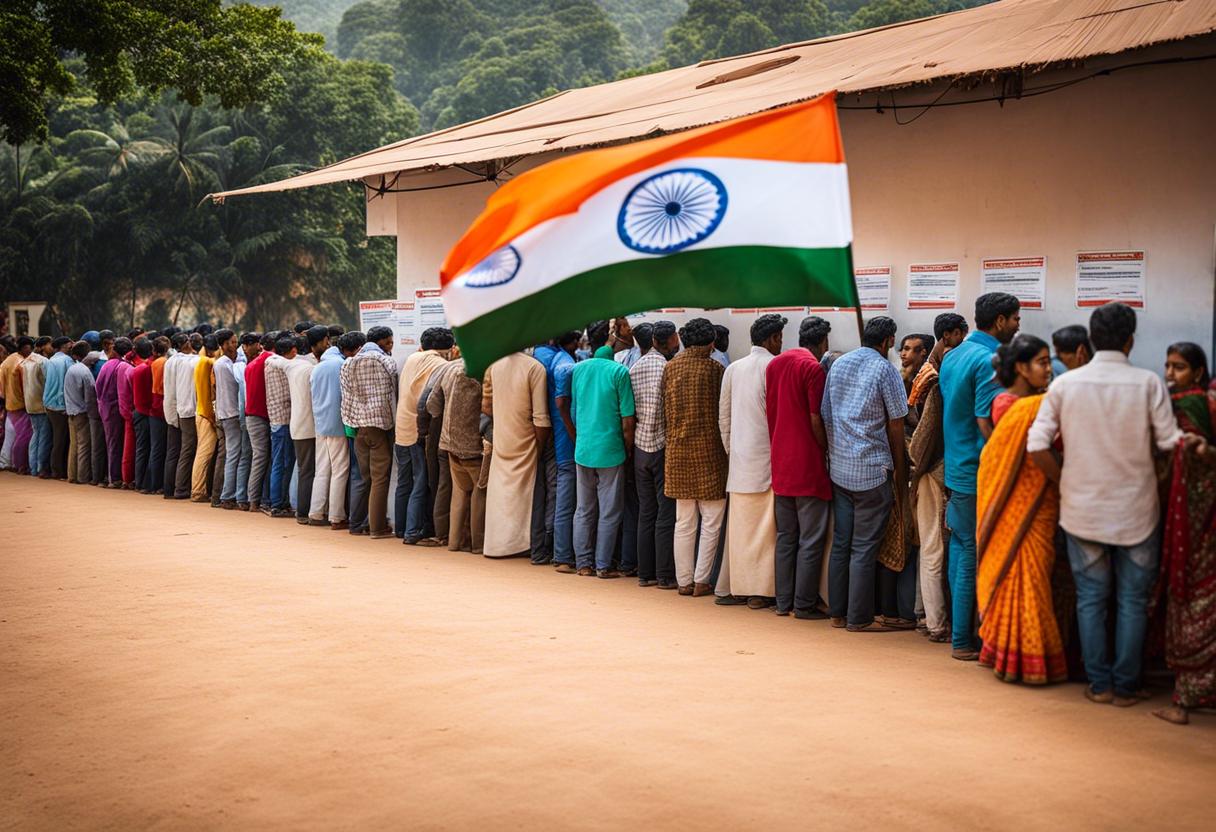Results from India’s extensive electorate, consisting of 642 million voters, indicate a distinct rejection of Prime Minister Narendra Modi’s “Hindutva” agenda, an endeavour to reshape India into a Hindu-nationalist state of majority rule. While the increasingly authoritative Modi steps into his third prime ministerial term, his governance will be moderated by the participation of secular influences.
The anticipated robust majority, according to previous polls, was repudiated by a unified opposition coalition – INDIA, commanded by the Indian National Congress led by Rahul Gandhi and a variety of regional parties. During the 2019 electoral race, Modi’s Bhwasaratiya Janata Party (BJP) secured 303 out of the 543 positions in the Lok Sabha, the lower house in the Indian legislature. Adding to his regime were 50 MPs derived from lesser coalition allies. However, in this phase with a mere 240 seats to its credit, the BJP requires additional partners who are not in favour of Hindutva to bolster its parliamentary dominance. Those confederates affirmed their backing of the newly formed government last Wednesday which is expected to be inaugurated on the subsequent Saturday.
After a decade in power, Modi’s popularity remains intact, yet his ability to ensure a third term came under question due to suppressive measures against opposing parties, including seizing campaign funds, imprisoning leaders on perceived corruption charges, alongside his monopolisation of print and broadcast media. His vehement anti-Muslim rhetoric and advocacy of Hindu nationalism have stoked the fires of sectarian conflict.
Modi, who lately proclaimed his birth was not a mere biological occurrence but divine intervention, appears to have overstepped and might be manoeuvred towards unexpected dialogue and compromise. Interestingly, the election outcomes reveal inclinations of his Hindu constituents becoming alienated. The BJP’s influence dwindled in certain historical strongholds, most notably in Uttar Pradesh, the most densely populated state in India.
The decline of the Faizabad district, which houses the extravagant temple in Ayodhya, personally and controversially initiated by Modi, holds substantial significance. The event marked an apex for a Hindu campaign aimed at constructing a temple on an illegally destroyed centuries-old mosque site by Hindu activists in 1992. Rather than gaining BJP favour, the excessive spending led to the relocation of locals, creating a fear of an overwhelming party majority threatening minority rights, inclusive of job distributions.
Since taking office in 2014, it’s undeniable that India has witnessed unprecedented progression in road, rail and energy infrastructures. The establishment of a digital welfare state has boosted the nation’s global self-assurance, while also serving a portion of the impoverished population. Despite this, India has one of the world’s biggest disparities in wealth and income, and though welfare has somewhat curbed poverty, it still prevails. The voters’ primary areas of concern include high inflation rates and job scarcity.
Unless Modi pays heed to this message conveyed by the electorate, his continued term might face turbulence.

